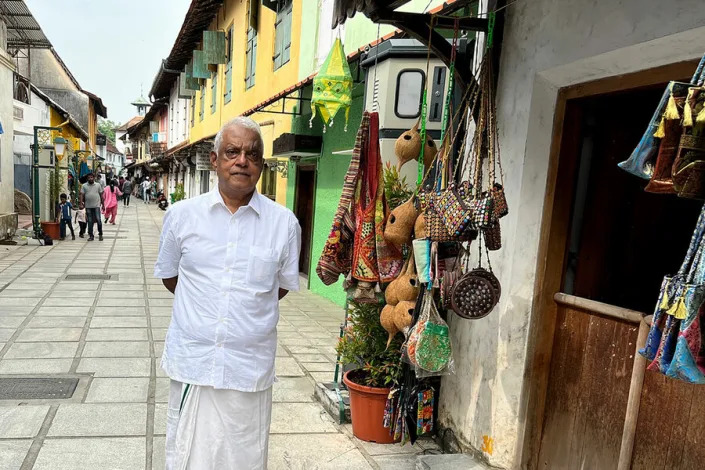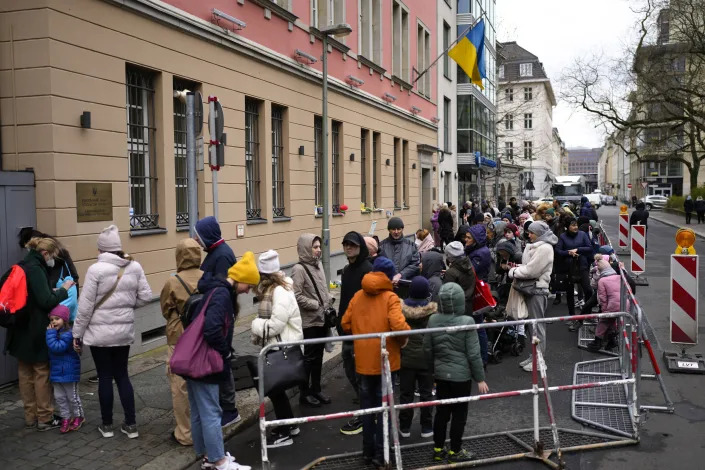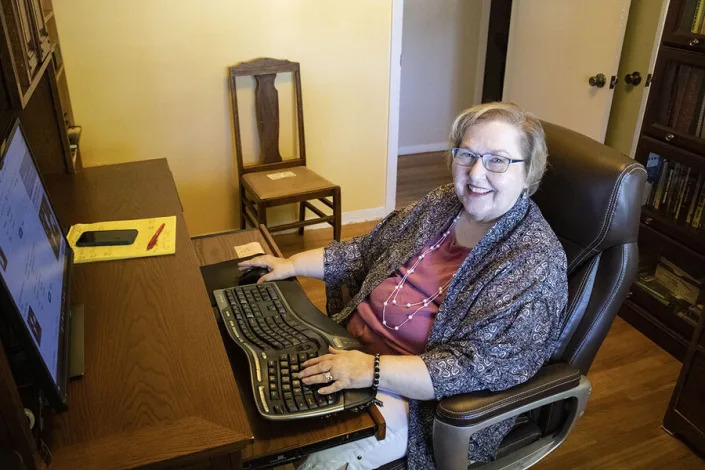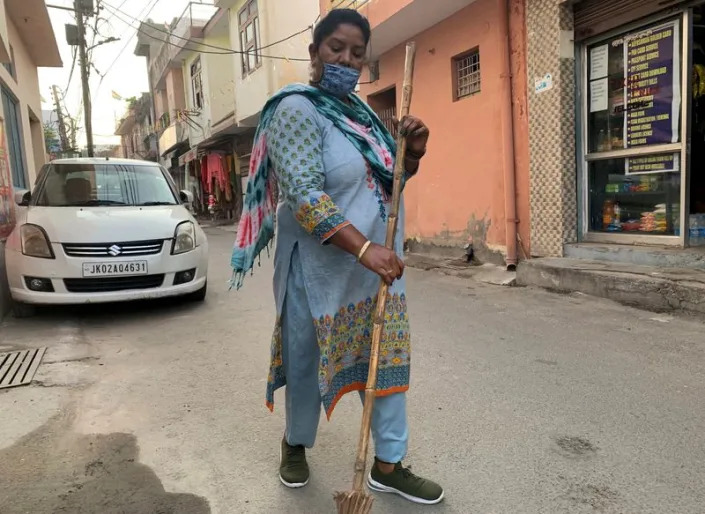Long life, good education, but no jobs? Kerala model faces test.

Howard LaFranchiCSM
Wed, January 11, 2023
Over the past half-century, the so-called Kerala model of development has helped transform a poverty-stricken state in southern India into a bastion of economic and social well-being.
From a foundation of equity and inclusion, Kerala built what experts describe as one of the developing world’s first safety nets, and has repeatedly ranked high above the rest of India on the Human Development Index, despite low per capita income. Literacy rates, life expectancy, and human rights records in Kerala state resemble that of developed nations.
It’s a story of transformation and human progress that many Keralites relate with pride – yet increasingly with criticism as well.
“I have witnessed the many improvements that came with the model we followed,” says Jose Dominic, a local business leader who started out as an accountant and built CGH hotels, one of the country’s top hospitality and tourism enterprises. “It’s something Keralites can be proud of, but we must recognize it was a transformation of the 20th century. … In many ways Kerala is not keeping up.”
Indeed, Kerala today is known more for low job growth, high out-migration of its educated young people, and a hostile environment for the private sector, the main driver of growth in India. Foxconn, which manufactures iPhones for Apple in China, came to look at Kerala for a new iPhone plant that will create 30,000 jobs. But the tech manufacturer opted instead for neighboring Tamil Nadu, where it recently opened the first phase of its new India operations.
Of all the challenges facing Kerala today, Mr. Dominic and many other Keralites believe the most important test will be whether the state can adapt its development model to the 21st century to ensure new generations find the same prosperity Keralites built in the past.
“The big issue today for Kerala is this: Can we afford to preserve the benefits of our model,” he says from his spacious home in the business capital of Kochi, “while decentralizing our economy and freeing up the private sector to create jobs so people can stay here?”
The birth of the Kerala model
As India marked a decade as an independent nation in 1957, many in the former crown jewel of British colonies seemed to have little to celebrate. Yes, India was a democracy, but millions of Indians were poor and illiterate, focused day to day on staving off hunger and unable to give much thought to building a better future.
That same year, one Indian state stood out – even drawing the alarmed attention of the Central Intelligence Agency in Washington. Kerala, home to the storied Malabar Coast and once the production end of the spice trade that enriched Europe, became one of the first places in the world to bring a communist government to power through elections.
Kerala’s voters were not attracted by the notion of revolution, historians and political scientists say, but rather by a vision of economic and social development based on universal education, public health, and equity of economic opportunity across castes and religions.
What would come to be known as the Kerala model of economic and social development was born.
Ensuing decades of leftist rule stuck to the model, as Keralites elected governments alternating between the Communist Party (Marxist) and the traditional leftist Congress Party – or what some describe as steady “left or left-of-left” governance. For Brown University sociologist and India expert Patrick Heller, what took hold in Kerala was not so much classic communist rule but “social democratic governance in a third-world setting.”
Although it helped put the state on the map, some worry Kerala has outgrown its model.
“India is young, but Kerala is turning old, and I worry that unless we open the doors to a vibrant economy with jobs for our young people we will end up with an old population living off remittances,” says Mr. Dominic. “That is not a model for Kerala or India.”
Ongoing exodus
There are signs that Kerala’s leftist political leaders recognize the state has deep economic problems – including a crushing debt built up over years of paying for the safety net. Even some of Kerala’s communist leaders acknowledge that the vaunted model needs to change to survive.
Still, for many Keralites, change is not happening fast enough. Welder Shelju Josh plans to take his skills to New Zealand, where his Keralite wife is already working as a nurse.
“Yes I hear about Kerala changing to allow more jobs, but what I see is everyone I know looking to go to another country,” says Mr. Josh.
“Kerala is home but there are no good jobs here,” adds the young father, “so how can you stay?”
Vinod Mathew, a Malayalee (as Keralites call themselves) and longtime economics analyst, says the loss of the Foxconn plant and other blows to Kerala’s self-image may be the jolt the state needs to refashion its model for the 21st century.
“Malayalees have long seen education as their passport to economic freedom,” he says. “But we haven’t continued to move forward, especially in the quality of higher education. Now most families will now beg, borrow, or steal to send their children abroad.”
Indeed some streets in Kochi, Kerala’s largest city and business capital, are crowded with recruitment agencies using giant billboards to attract college students to higher education opportunities in Europe or high-tech jobs in the United States.
Mr. Mathew cites as a product of the Kerala model his mother, who despite having no money growing up was able to rise all the way to a postgraduate degree in social work to fulfill her dream of assisting Kerala in its march forward in living standards and well-being.
“Those kinds of life stories were more the norm in her era,” he says. “Over time we got complacent with the good thing we have, and we forgot to look out at the world and see the change.”
Now, he adds, “young Malayalees with ambitions like my mother had are dreaming of opportunity anywhere but here.”
Indeed, more than 4 million Keralites are estimated to have left for the Gulf alone over the past two decades, while others seek work in Europe, the United States, and even other Indian cities.
Possibility of progress
Of course, there are still examples of the Kerala model at work.
On a recent day in the capital of Trivandrum, a team of seamstresses was busy assembling uniforms for a nearby martial arts school and mass-producing cloth bags to meet new demand created by Kerala’s recent ban on plastic bags.
They work for Needle Touch Garments, a small sewing business that used a $2,400 loan from Kudumbashree, a government program that aims to expand women’s access to the economy, to increase staff and purchase new sewing machines.
“I used to stitch for my own family and sometimes for neighbors, but now with this I’m also fulfilling a dream of helping other women improve their lives and conditions for their families,” says Needle Touch founder Maya Redi, who has a masters degree in commerce.
Kudumbashree’s new young director, Jafir Malik, says that over three decades the organization has assisted hundreds of thousands of Keralite women enter the workforce. But he recognizes that Kudumbashree’s focus on microfinancing for individual women’s small businesses and skills-building classes in talents like sewing is no longer meeting Kerala’s needs.
“That approach worked well in the past, but with the changing times we realize that the small-scale units won’t meet the needs of large enterprises or our goal of helping more women improve their lives,” Mr. Malik says.
Under his direction, Kudumbashree has shifted to focus on three new priorities: boosting the skills of younger women, helping meet the employment needs of large companies, and working more with disadvantaged communities such as disabled people and trans women.
Over the last three years, Kudumbashree has trained 74,000 women in new skills including tech-manufacturing assembly and understanding software. “Of those, 65,000 got jobs allowing them to build their lives here in Kerala,” Mr. Malik says.
The changes reflect both Kudumbashree’s and the state government’s recognition that the model that helped make Kerala an example for India has failed to evolve with a changing national and global economy, he says.
At the same time, Mr. Malik insists that the image of a failing Kerala that is hidebound, unfriendly to business, and unattractive to its young people “has also not kept up with the reality.”
As evidence, he points to a recent survey gauging the ease of doing business in Indian states which found that Kerala is moving up. “For a long time Kerala was stuck at 28 of the 30 states,” he notes, “but it’s now nearing the top 10. That’s real progress.”


















